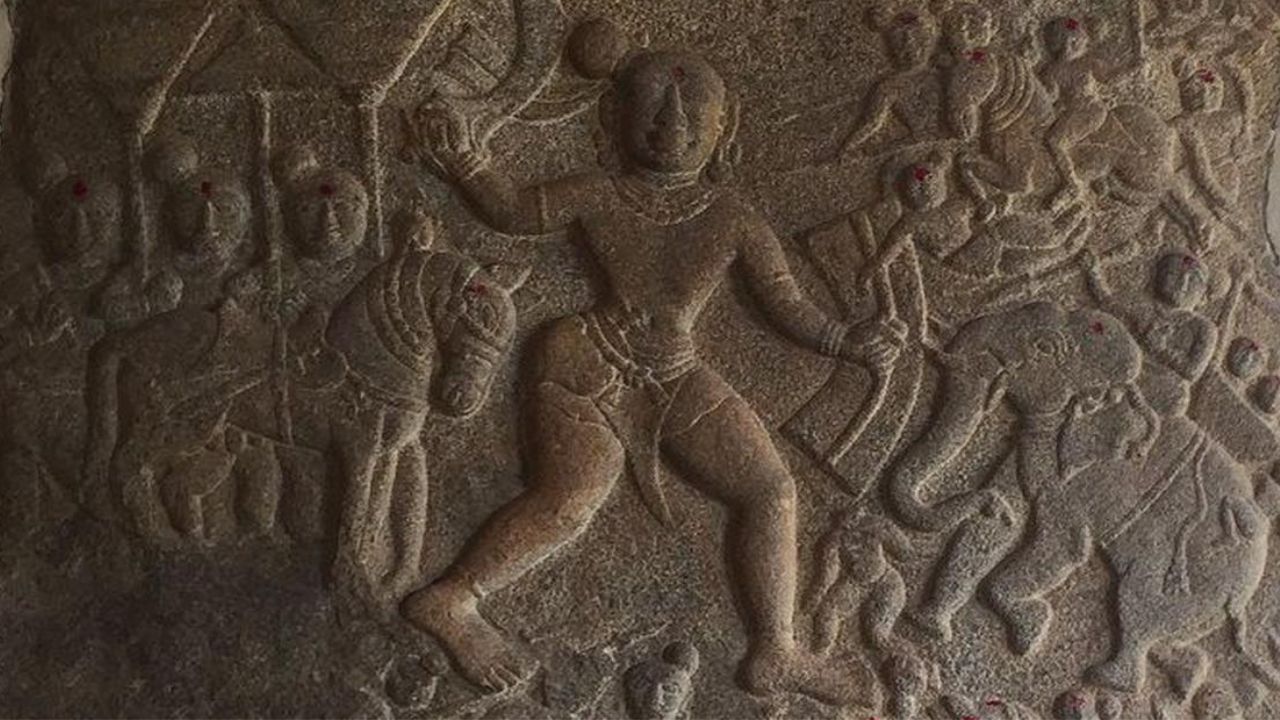On Friday, Bibi Netanyahu found his next war. Tel Aviv bombed Iran’s nuclear facilities, claiming it was close to developing nine bombs. No, we don’t know how this story goes. This is Tehran not Gaza.
Iran’s nuclear program: A bit of background
The origin story: This may come as a bit of a shocker. Iran started its nuclear program with the blessings of Washington—back in the day when Shah Pahlavi—joined the US “Atoms for Peace” program. The aim of the program: “President Eisenhower intended for this program to help developing countries use nuclear power for energy and other peaceful purposes”—to secure allies against the Soviet Union. A kinda friends and family program for nuclear power.
Cue the Revolution: When the ayatollahs came to power in 1979, they put the program on ice—deeming it “un-Islamic”. In fact, Iran even signed the Nuclear Non-Proliferation Treaty the same year. But in the 1980s, a bloody war with Iraq changed their mind. The US coming down on the side of Baghdad—ignoring its horrific use of chemical weapons—didn’t exactly help matters.
Enter Dr Khan: Starting in 1987, Iran started to work on developing nukes—with the generous assistance of the infamous Pakistani scientist AQ Khan. The father of Pakistan’s nuclear program is also suspected of distributing nuclear know-how to North Korea—which has since become Tehran’s close ally. Reminder: Pakistan tested its A-bomb in 1998 but there is strong evidence it possessed the capability since the early 1980s.
A special irony alert: that Indians will appreciate:
President Jimmy Carter, who came to office as a strong opponent of proliferation, faced an “acute dilemma” over Pakistan because, in the words of another January 1979 State telegram, “we wish to be more supportive” of Islamabad in the wake of a revolution in Iran and growing Soviet influence in Afghanistan. The Carter administration worried that pushing too hard on proliferation concerns could alienate Pakistan – a regional counterweight to Soviet partner India – and produce greater instability in the region. Ultimately, Carter held back from confronting Islamabad over its nuclear program.
The very same Islamabad went on to give that nuclear tech to Iran—and has since given shelter to Islamic terrorists of every stripe. The world is forever reaping what the Americans sow.
The big Q: Does Iran have the bomb?
Tehran officially set up its nuclear weapons program—dubbed Project Amjad—in the late 1990s. But both the UN and the US agree that it was shut down in 2003—when Iran signed the IAEA’s Additional Protocol—and agreed to inspections. What happened after remains a point of contention:
In the early 2000s, international inspectors announced that they had found traces of highly enriched uranium at an Iranian plant in Natanz. Iran temporarily halted enrichment, but resumed it in 2006, insisting it was allowed under its agreement with the UN’s nuclear watchdog, the International Atomic Energy Agency (IAEA).
The US and its allies didn’t buy it—and decades of sanctions followed.
Yet another ‘new deal’: In 2015, led by Barack Obama, Iran cut a deal with the US—and China, France, Germany, Russia, the United Kingdom, and the EU—that greatly limited its nuclear program in return for lighter sanctions:
The deal required Iran to keep its uranium enrichment levels at no more than 3.67%, down from near 20%, dramatically reduce its uranium stockpile, and phase out its centrifuges, among other measures.
Reminder: Uranium isn’t weapon-ready until it’s enriched to 90% purity. And nuclear power plants that generate electricity only use uranium that is enriched to between 3.5% and 5%.
Enter, Donald Trump: The master of chaos threw the deal out the window in 2018. It marked the beginnings of a beautiful Bibi-Donald friendship—where one obligingly offers cover for the other’s worst behaviour:
In April 2018, Prime Minister of Israel, Benjamin Netanyahu, announced that Israeli spies raided a nuclear information warehouse in Iran. According to the Prime Minister’s statement, the spies found documents that confirmed the existence of Project Amad.
Except:
The spies in the Israeli raid collected documents from 15 years ago, so their information only provided historical context for the extent of the project, rather than revealing the current status of the nuclear weapons program.
Not that anyone cared. Washington stormed out—reinstating severe sanctions—that left Iran free of any obligation or incentive to curb its nuclear ambitions:
Tehran in turn said it would stop complying with parts of the agreement, and started increasing uranium enrichment and uranium stockpiles, and using advanced centrifuges. It removed all of the IAEA equipment previously installed for surveillance and monitoring activities.
Where is Tehran now? Bibi is damn sure that Tehran already has the capacity to build nine nuclear bombs. Hence the tsunami of first strikes on Iran. But, but, but: As recently as March, Tulsi Gabbard, the US director of national intelligence, told the Senate intelligence committee that Iran “was not actively pursuing a nuclear weapon”—though it noted “Iran’s enriched uranium stockpile is at its highest levels and is unprecedented for a state without nuclear weapons.”
The IAEA is equally fuzzy on Iran’s arsenal:
A 22-page report declassified by the IAEA board this week did not say Iran was so close to a nuclear weapon. It said it had been unable to see aspects of Iran’s civil nuclear programme, and believed Tehran had repeatedly failed to cooperate, particularly over its past secret nuclear programme. It concluded that it could not verify that Iran’s civil nuclear programme was exclusively civilian. But it did not say Iran was on the verge of a nuclear weapon.
The report also concluded there are “no credible indications of an ongoing, undeclared structured nuclear programme.”
The main takeaway: The truth is no one knows the exact state of the Iranian nuclear program. All we can say is that the Iranians have been suspiciously secretive—and have a lot of enriched uranium. It’s all a bit worrying but there is no evidence to justify extreme measures.
About those Israeli strikes…
The Israelis have struck a series of serious blows—but it is unclear if they have damaged Iran’s nuclear resources.
The missile strikes: on Friday targeted Natanz—”a complex at the heart of Iran's enrichment programme”:
[Natanz] was built for enrichment on a commercial scale, able to house 50,000 centrifuges. Around 16,000 centrifuges are currently installed there, roughly 13,000 of which are in operation, refining uranium to up to 5% purity.
Of the three other nuclear sites, Israel also hit Fordow, and Isfahan has not been impacted. You can see where they are below:

Damage done: Propaganda is easier to source than facts in the middle of a war. It is true that key Iranian facilities are buried underground—and are very difficult to take out. But the Israeli and US military tell CNN, TIME etc that the strikes did serious damage. OTOH, Iran says they’re doing just fine. But we only have guesstimates based on over-ground satellite photos as evidence.
As for known facts: At least, both sides agree nine nuclear scientists were killed—as were the top three military leaders: “one who oversaw the entire armed forces, Gen. Mohammad Bagheri; one who led the paramilitary Revolutionary Guard, Gen. Hossein Salami; and the head of the Guard’s ballistic missile program, Gen. Amir Ali Hajizadeh.” Also dead: Ali Shamkhani, Iran’s top national security adviser. It is also clear that Mossad had fully penetrated the Iranian establishment—the level of intelligence on targets was astonishing.
Casualty count: According to a human rights group, at least 406 people have been killed and more than 654 have been wounded, including women and children—since the first strike on Friday.
Things to see: Here are satellite images of the aftermath of Israeli strikes on Natanz:

About those Iranian strikes…
Since the Friday strikes, the two sides have been exchanging waves of air strikes. The Iranian retaliation began Friday morning with more than 100 drones—followed by a second wave shortly after 11 pm on Saturday and which continued overnight. They were aimed at Jerusalem, Haifa, and Bat Yam, a city south of Tel Aviv. Tel Aviv in turn has struck Iran’s defence ministry and a key oil depot—targeting its energy infrastructure.
A sign of weakness? Israel’s famous Iron Dome—a system of air defence supplied by the US—has been very effective in intercepting short-range rockets. It has given Israel a decisive advantage in every military confrontation—especially in limiting civilian deaths. But some of Tehran’s missiles have been able to break through—even in central Tel Aviv. You can see one such strike here:
Casualty count: According to the IDF, 14 people have been killed and 390 wounded.
But, but, but: These minor successes may not be enough to change Israel’s overwhelming superiority:
The IDF said its operation would continue for days, but that the first wave consisted of 200 Israeli fighter jets dropping "over 330 different munitions," to hit more than 100 targets in Iran. "Israel has once again demonstrated its considerable conventional military superiority, and the size of the force allegedly assembled for this series of attacks represents the overwhelming bulk of their longer-range strike aircraft," [Military expert Matthew] Savill said.
Let’s get real: no one expects Iran to win a traditional war.
The other big Q: What’s Bibi’s end game?
Why would Bibi launch a unilateral attack on Iran—right when he is busy slaughtering Gazans—and grabbing their land? As always, Netanyahu’s motives are opportunistic, petty—and somewhat delusional.
Reason #1: Excellent timing. Iran’s geopolitical clout has been seriously damaged over the past year. Tehran’s few allies in the region—Hamas in Gaza, Hezbollah in Lebanon and Bashar al-Assad in Syria—are on the run. And its great nemesis—Donald Trump—is back in the White House. The rest of the world is busy surviving the great tariff wars. What better time to strike?
Some experts think Bibi sees an unprecedented window of opportunity to remake the Middle East in Israel’s image:
The attacks on Hezbollah in particular were not met with the kind of blowback that many in Israel feared, allowing hawks in Israel to argue that their country has an unprecedented opportunity to continue to target its enemies, including Iran, and reshape the entire Middle East. Some may think the opportunity is even there for regime change in Iran – although that would likely require a far longer war than Israel has the capability to conduct.
Ah yes, ‘regime change’... we all know how well that has worked for the Americans. Maybe Israel can do it better!
Reason #2: Trump surprised everyone by reopening negotiations with Tehran—which seem to have stalled out. Some say Bibi wanted to make sure they never get back on track. So he went ahead despite Trump—who said just hours before the strikes that he opposed an Israeli strike that could "blow up" the negotiations. Btw, the next round of Iran-US talks have been cancelled—so mission accomplished!
But, but, but: Israelis claim Trump’s protests were part of a great fake out:
Two Israeli officials claimed to Axios that Trump and his aides were only pretending to oppose an Israeli attack in public — and didn't express opposition in private. "We had a clear U.S. green light," one claimed. The goal, they say, was to convince Iran that no attack was imminent and make sure Iranians on Israel's target list wouldn't move to new locations. Netanyahu's aides even briefed Israeli reporters that Trump had tried to put the brakes on an Israeli strike in a call on Monday, when in reality the call dealt with coordination ahead of the attack, Israeli officials now say.
Ah, the state of US diplomacy! What can possibly go wrong?
Reason #3: Bibi is tired of the world scolding him for killing Gazans—and/or trying to save their lives. Emma Graham-Harrison in The Guardian points out:
In the hours after Israel attacked Iran, food shipments and distribution in Gaza stopped and a French-Saudi summit meant to pave the way for wider recognition of a Palestinian state was postponed indefinitely.
International pressure over starvation and civilian killings in Gaza had apparently dissipated in little more than the time it took for the smoke of the first missile strikes to clear over Tehran.
Happy coincidence, perhaps? Look, winged piggies!
Reason #4: For years now, Netanyahu has managed to hang on by cobbling together a precarious coalition—while election after election ended in a split verdict. Bibi also needs to stay in office—since he will have to face serious charges of corruption the moment he stops being PM. Waging war after war gives him exactly what he needs. It keeps his rightwing coalition together—and silences his domestic opposition who dutifully rally around the flag.
The bottomline: Right now, many are betting on Israel decimating Iran—weak and running out of options. It’s far too early in the day to discuss what happens next. Wars are unpredictable—more so when you put a powerful nation like Iran in a corner. At least one of the possible outcomes—-an Iran more determined than ever to go nuclear:
Israel cannot, by force alone, remove Iran’s will to build a bomb. So even if Israel does serious damage to Natanz and Fordow — a real “if,” given Fordow’s extensive fortifications — it can’t stop the Iranians from repairing it without launching another strike in the future. Moreover, a successful Israeli attack would solidify Iran’s interest in acquiring a nuclear deterrent, meaning that Iran would invest huge amounts of resources in a nuclear rebuild as soon as the bombs stopped falling.
Think about that for a minute. Israel has just convinced Tehran more than ever that a bomb is necessary for its survival.
Reading list
Vox (login required) is best on how to make sense of events thus far. Al Jazeera has more on the rationale behind Israel’s decision to attack now, and has the latest coverage on the strikes. TIME Magazine has more on how the Israeli attack damaged Iran’s nuclear program. The Guardian answers the question of whether Iran is actually close to building a nuclear weapon and how these attacks have slowed all momentum towards stopping the attacks in Gaza. Reuters has the details of where Iran’s nuclear sites are. Columbia University’s Centre for Nuclear Studies and CNN have the history of the country’s nuclear development. Read CNN also for understanding how it has become a playground for the Israeli intelligence service.







